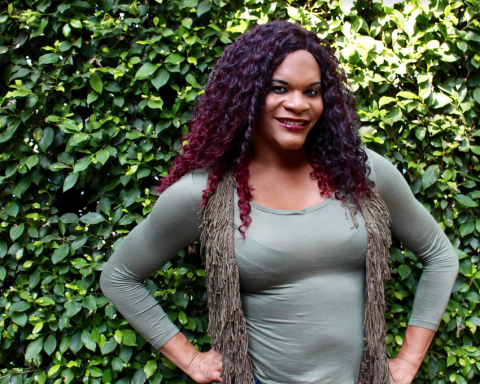Most people have never heard of Qigong. Most people don’t even know how to pronounce it (it’s “chee goong” to approximate it, and alternatively romanized as “chi kung” too). Most people also will absolutely fall in love with it if they give it a chance.
So what is Qigong? The direct translation means “movement or work with qi”, and oftentimes, people translate “qi” as “energy”, which isn’t too far from the original meaning, but for sake of simplicity, let’s say it’s energy here. Qigong is a diverse and deep practice that has many different styles and techniques, ranging from breathing to both static and dynamic physical exercises and mental meditations. Sound familiar? Yes, this is how one would characterize yoga, and very generally too, but for people who have been doing yoga for a while, we know it’s much, much more than that and not just merely an option for both health and fitness.
While yoga has its pranayama breathing, hundreds of asana postures, and meditations that are both chanting of mantras and work on opening the heart space, we often need to remind ourselves that yoga was and still is a deep system of spiritual learning, and good health is part of the practice to enlightenment. Traditional yogis may not even do anything but chant mantras or do one asana such as holding their hands stretched out to the heavens and vowing never to lower them again, or assume meditative position while retreating into a cave for years. In contemporary times, most people don’t go this deep into practice, and yoga often resonates with people who want to both look and feel great, so fitness and self-love tend to be two common factors that bring people into yoga. For Qigong, however–it’s a little different.
Most people are exposed to Qigong without even knowing it’s Qigong–this is Tai Chi, or properly romanized in Pinyin, Taijiquan (Tai Chee Chuan). Tai Chi is originally and still is a very, very powerful martial art–look at the use of swords and spears and other weapons when you go deeper into the practice, and you may wonder what those old Chinese people in the park are really up to when we aren’t looking. But this is only one kind of Qigong, and it’s the kind that has simple movements that are akin to yogic asanas, and is used for martial practice, meaning eventually, those moves will be used to fight and can kill someone–provided that the instructor is teaching martial Tai Chi rather than the simplified practice that is only taught for health. It’s analogous to turning Muay Thai or Savate (kickboxing styles) into Tae Bo, where you use the movements for fitness, but you don’t learn how to actually fight with Tae Bo, and this is what Tai Chi is now.
How Tai Chi works in terms of health is that it’s Qigong: it’s balancing and moving your energy, is an easy exercise to pickup but difficult to master, and not only is a moving meditation that calms the mind, but leads to healthier joints, relief from physical trauma and mental and emotional trauma (yes, it’s true and clinically proven too), and exercises the organs as well. So one can do Tai Chi purely as an exercise and derive health benefits from it, but to train under a real master would lead someone to discover just why Taijiquan is translated into “The Supreme Ultimate Fist”. Tai Chi, however, as we can not emphasize enough, is only one kind of way to practice Qigong.
Other styles are Relaxation Qigong, which involves no movement at all, just mental meditation and breathing and can be done either lying down or sitting comfortably in your chair, and can be enjoyed by the blind, deaf, paralyzed, and other limiting disabilities, and it has healed even serious conditions like appendicitis. There are also the Bedside Brocades, a self-massage form that has not only helped muscle injuries, but leads to better sleep and the ability to withstand extreme heat and cold–this author doesn’t even use the electric fan in the summer or the heater in the winter! You also have Zhan Zhuang (pronounced “jan joo-wong”), which are standing meditations that allow us to become stronger, grow taller by as much as two inches, detoxify the organs and mind, and create greater bone density. Then there are the Six Healing Sounds, which are six breathing and toning techniques that massage the internal organs and can expel negative emotions and thoughts while giving us deeper, quality sleep and in less time, not to mention makes it easier to induce lucid dreaming.
There are over 100,000 styles of Qigong in China, and many times, we may only need one form, and all speed us along towards enlightenment, and health just happens to be the first and most accessible, guaranteed benefit from the practice. Certain styles complement one another well, such as the Bedside Brocades and the Eight Strands of Brocade standing exercises, others can not be practiced with others such as with Fragrant Qigong, which requires you to not meditate, not do abnormal breathing, or kick and shake your body a lot, lest you end up with energetic knots and in worse health–meaning you can’t combine it with forms like Spontaneous Five Animals or Relaxation Qigong, but at least it’s a style that can be done by anyone with two hands. Okay, Fragrant Qigong can’t be practiced by anyone with two hands–because the masters themselves say that if one hand is missing or paralyzed, just imagine it being used for the duration of the exercise while the healthy hand is doing the movements as well!
Qigong isn’t some mystical and mysterious art–it’s very accessible to all, or at least the publicly taught styles are. Qigong practitioners distinguish between health and fitness very clearly: to be fit is not the same as being healthy, and to be healthy is to be able to recognize health beyond a flat stomach and big muscles. If you can balance on your head, run six-minute miles, lift heavy weights easily, and can survive yoga classes, you may be fit, but if you shout a lot when someone angers you, you catch the flu even when you get flu shots, and you go between drinking too much alcohol and spending long, long hours in the gym or yoga studio, Qigong practitioners would not consider you healthy.
If your tummy bulges out a bit, your legs are big and your arms look toned but not muscular, and you seem “skinny” to others, you won’t look strong or fit to most people, but you will be able to remain calm in stressful situations while being kinder and more understanding, never feel so tired that you need coffee to stay awake, move heavier objects while using less effort than other people much bigger than you, and may sweat very little or not even sweat at all when doing intense cardio workouts in comparison to their classmates. So with Qigong, what you see is not necessarily what you get, because the few simple practices come from centuries and generations of distilling from secretive lineages and masters who figured out the best and easiest way to get the most and greatest benefits–why break your back for an hour (not literally, but in some situations literally) to get the same result (and often greater) out of doing one Qigong method for a few minutes?
Qigong has a lot of overlap with yoga, but brings a very different feeling, and is often embraced by yoga students as a complementary practice. Other people may not even like yoga at all, but find themselves in love with Qigong since it has less physical demands and limitations to getting benefits from simple practices. Blind, deaf, and paralyzed people can practice a number of styles, and some even report improving or completely healing from their handicaps, but healing other issues that they never thought could be done as well–Fragrant Qigong and Spontaneous Five Animals forms have been known to cure psoriasis even, and have helped many bipolar, depressed, suicidal, and insomniac students, and often causes people to quit their addictions to drugs, alcohol, smoking, pornography, and gambling without even being told to do so. It is a practice worth exploring, and exploration of ourselves is an unknown frontier that no plane, bus, ship, or train will ever be able to take us to, and the treasures there are worth discovering and sharing.
For more information, please contact qigongforhealthandtrav




